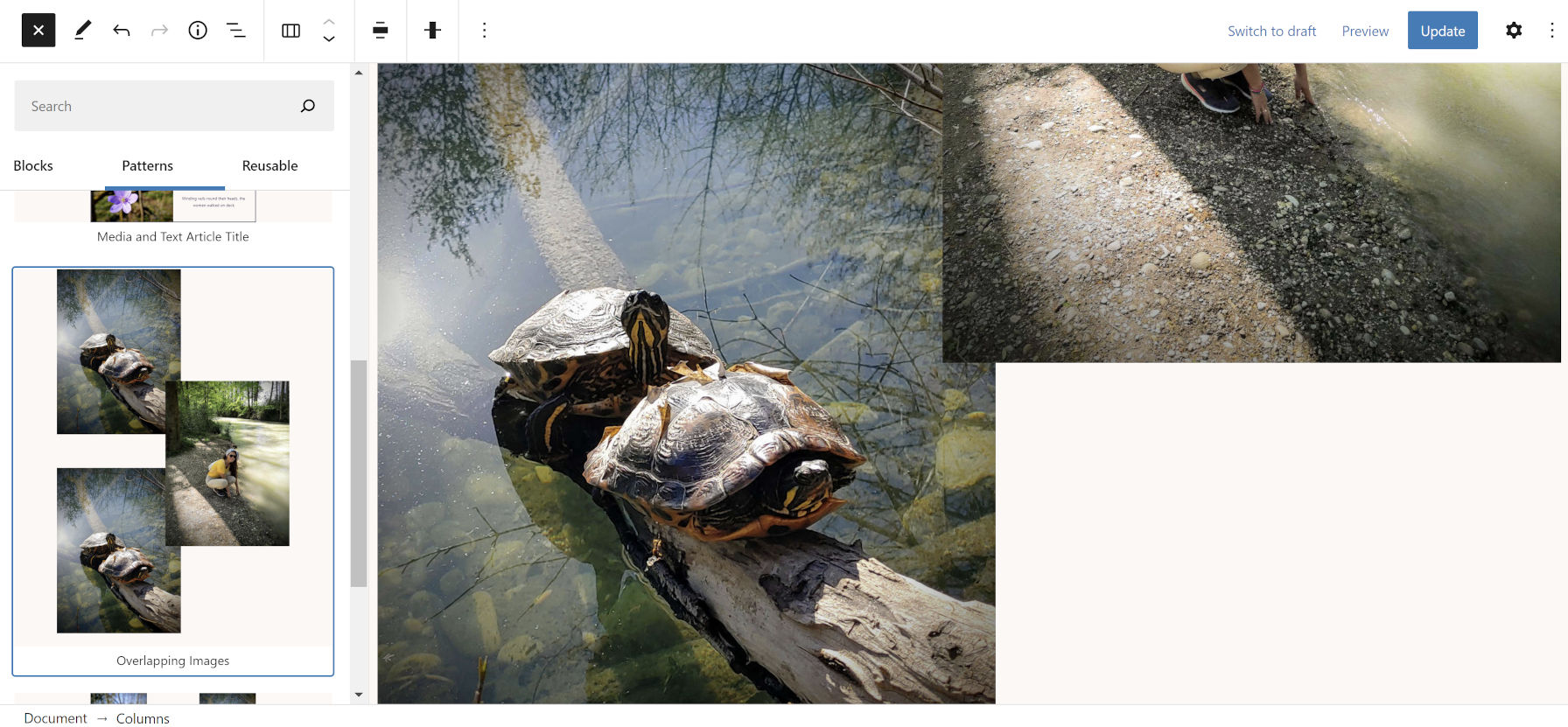
Over the weekend, Anariel Design co-founder Ana Segota tweeted that she was nearly ready to submit the company’s first block theme into the WordPress directory. There are only five such experimental themes available for download in the repo right now, and I have been patiently awaiting more.
The Naledi theme is in the review queue, but those who want to give it a spin can grab a copy of the ZIP file from its ticket. Or, just peruse the theme’s demo.
Block, block-based, or FSE themes are built entirely out of blocks, not just the post content. This includes the header, footer, and everything else in between — literally, everything is a block. Such themes are the future of WordPress and need more user testing.
Like most block themes at the moment, Naledi is not meant for use on a production site. The goal is to build upon the site editor and templating systems in the Gutenberg plugin. The earliest that stable iterations of these FSE sub-components could land in WordPress would be in version 5.9 later this year, but there is no guarantee of that yet.
The WordPress.org Themes Team allows block themes in the directory. However, a team lead must grant permission using the “special case” system in place. There is still a six-month-old ticket awaiting closure before anyone can upload block themes without special access.
On the whole, Naledi is a well-rounded theme given the limitations of block templating right now. It has plenty of personality and is a good representation of how themers should be building on top of the system. There are miles to go, but the Gutenberg development team is driving fast.
One of the most revealing items was how little CSS Naledi needed (roughly 20 kb). It is almost entirely built upon the theme.json style system. Most of the code is merely modifications for custom block styles and adjustments to the core blocks.
The theme currently has nine block styles. Most of the concepts are around adding borders. Eventually, these border-related styles may be unnecessary. Border settings are coming to more and more blocks out of the box. Users will be able to directly make border changes on nearly anything, and theme designers can package their old styles as custom patterns instead.
Of the theme’s block styles, my favorite is the framed image. I have been on a bit of a frame kick as of late, so I like seeing what others are doing with the idea.

Naledi also bundles eight-block patterns. Most include the Columns block, but others incorporate the Media & Text and Cover blocks, such as a full-width page header.
The Testimonials pattern uses the theme’s Overlap style for the Columns block. It shifts the left column to the right and the right column in the opposite direction, creating an overlap.

There is a similar pattern named Overlapping Images that uses the same technique.

What Naledi does that I have not seen with many block themes yet is add several custom page templates. It technically registers only two of them via its theme.json configuration. However, six exist in total, and the Gutenberg plugin automatically picks them all up on a per-page level — not sure if that is a bug or a feature.
- About
- Home
- News
- Sidebar
- Testimonials
- Tours
Because Naledi is a block theme, users can make direct changes to any of the templates, putting their own coat of paint over the default or overhauling them entirely.

As always, it is a welcome sight to see another block theme headed for the official directory. It is by no means perfect — working in an imperfect system. However, experiments like Naledi give me more hope that we are heading in the right direction.
